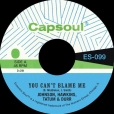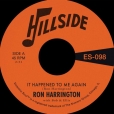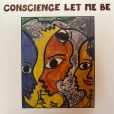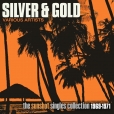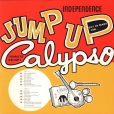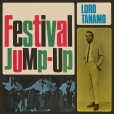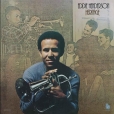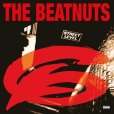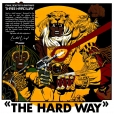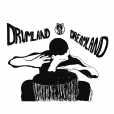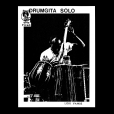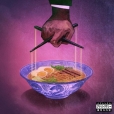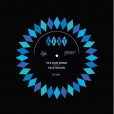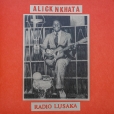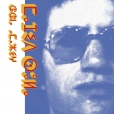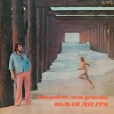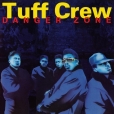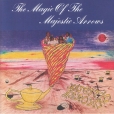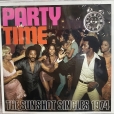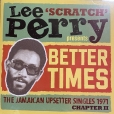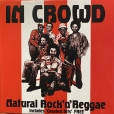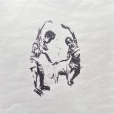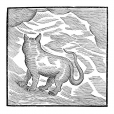Your basket is empty

1983 boogie from Detroit, Michigan. A poster insert features the musings of composer and producer Tony Green. Numbered edition of 500.
Heavy Al Campbell productions given the golden touch by three master engineers — Channel One dons Stanley ‘Barnabas’ Bryan and Lancelot ‘Maxie’ Mackenzie, and the one and only Hopeton Brown.
It was Al Campbell who produced Linval Thompson’s classic sides. Barnabus started up with Channel One when he was still at school; he was deejay for the sound; he learned mixing from Tubby; Sly taught him drums. Maxie was the technical whiz who built Channel One’s studio and sound-system amplifiers.
Originally out on Silver Kamel in 1981.
‘Deep and haunting; a dense tapestry of layered percussion, time-warped tape loops, and spiralling drumgita figures, all underpinned by hypnotic improvisations from Brazilian pianist Rafael Dos Santos. Privately pressed in 1982, it is both ecstatic and unsettling, a landmark recording in black British experimental music.’
A reissue of Vambe’s privately pressed album from 1982.
‘Occasionally, you find music outside the commercial mainstream, outside of everything – the music of visionaries, eccentrics, inventors, loners. Moondog, Daphne Oram, Harry Partch are from this mould. And so too is Lori Vambe.
‘A self-taught drummer, inventor, and sonic experimentalist, who moved from Harare to London in 1959, Vambe is a unique figure in British music. The creator of his own instrument, the drumgita (pronounced ‘drum-guitar’) or string-drum, Vambe intended to create a kind of music that had never been made in order to pursue access to the fourth dimension. The album plays with time, mixing hypnotic, trance-like drumgita pieces with the same segments played backwards. You can hear echoes of African drumming traditions, minimalist repetition, and tape-manipulated musique concrète— but ultimately, the album defies genre. It is a solitary voyage, spiritual and futuristic.’
A beguiling, one-of-a-kind blend of country, township jazz, and pop, from the heart of Zambia’s freedom movement, by ‘the first African voice on the radio for many Central Africans and the first kind of pop star for many Central Africans.’
Vocalist, guitarist, and bandleader Alick Nkhata moved effortlessly between lonesome country slide, big band pop, and air-tight vocal harmonies, all with roots in Bemba and other African traditional songs and rhythms. It’s a dizzying, inclusive, expansive blend from an artist and music archivist who became the voice of his nation’s fight for freedom. The lyrics and music represent the times — lonesome country laments like Nafwaya Fwaya and Fosta Kayi drift along the railways to urban centers and copper mines. Nalikwebele Sonka (I Told You Sonka) pairs honey-soaked yodels with a warning about the downward spiral of unemployment in townships, while Mayo Na Bwalya (Mother of Bwalya) is a mother’s plea to a traditional songbird for guidance of her wayward son. Songs like Shalapo, Kalindawalo Na Mfumwa, and his biggest hit, Imbote, infuse piano, big band horns, and even early electronic instruments into stunning syncretic pop masterpieces.’
‘It’s great that Zamrock is so well known for its incredible story and music, but that intense focus has a way of flattening the diversity of Zambian music and its history. So maybe we can’t necessarily say that Alick Nkhata led to Zamrock, but that rich history of mixing influences and creating new sounds in the copper belt started with Alick in lots of ways. All of that stuff is what people appreciate about Zamrock — that it was mixing sounds and that it was political in its own way. There’s a long history of that approach in the region, and it starts with Alick.’
Super-rare Chicago sweet soul LP, originally out on Arrow Brown’s Bandit label. ‘A string-laden fantasia straddling the street corner doo-wop of the ‘50s and the Me Decade’s studio excess. Backed by the Chosen Few and the Scott Brothers, arranged by Benjamin Wright, sung by Brown’s 17-year-old daughter Tridia and Moroccos falsetto Larry Brown.’ Lovey artwork by label-mate Eugene Phillips clinches the DIY, outsider appeal.
‘A wobbly loop of found sound. Almost inaudible speech from an unidentified documentary. Lapping waves of folk guitar created at the edges of the player’s ability. A haunted melodica. Mumbled vocals that reinvent the singer’s uncertainties as a deliciously glum pose. Layer these up in the recording software of your choice. Labour in a back bedroom overlooking the railway line to summon ghosts.
‘Spirits arrive from West Yorkshire, from Glasgow and Dunedin, from the suburban Midwest. Rising from squats and university accommodation past, from damp rooms filled with old paperbacks, stale hash smoke and abandoned mugs of tea.
‘Even as you listen to this collection of home recordings, made over the last few years by South London duo Jemima, these ghosts crowd around. Born in the Seventies to chase the tape experiments and gentle strumming of the Sixties they crane their necks and edge closer to the laptop. When something this perfect comes along, even the most tranquillised must stir their stumps.
‘It’s lonely music created around a wine bottle with a candle in it, made too late to appear via Xpressway or Cordelia. Don’t imagine though, that it has no home in the now. These spectres remain close because they know they are still wanted. We need them as much as they need us.
‘This spell-binding LP is a window onto a half-lit world on a deeper plane of consciousness.’
Valentina from Holy Tongue together with Koshiro Hino from Goat.
‘Abrasive drums and handcrafted Japanese electronics… bliss carved from bruises.’
